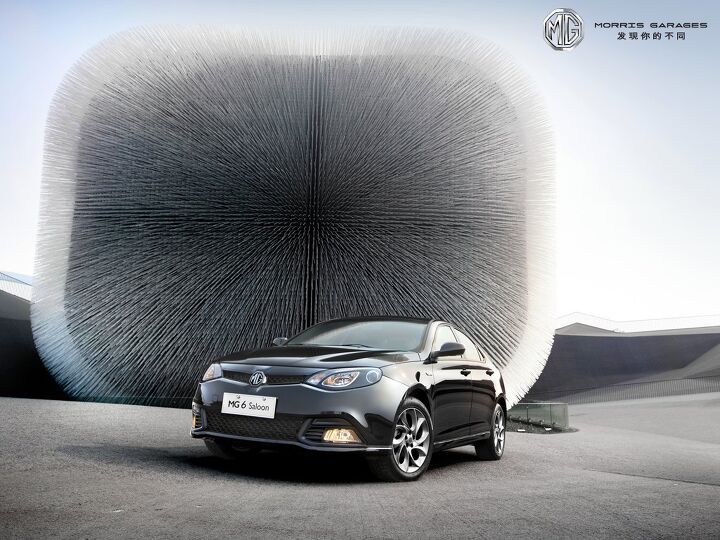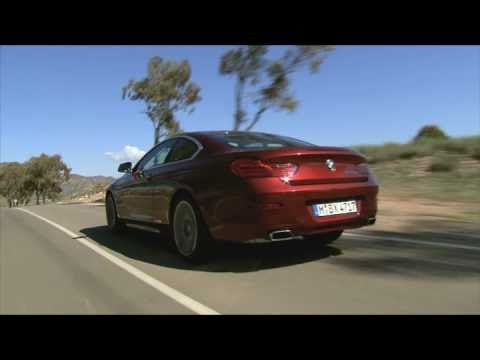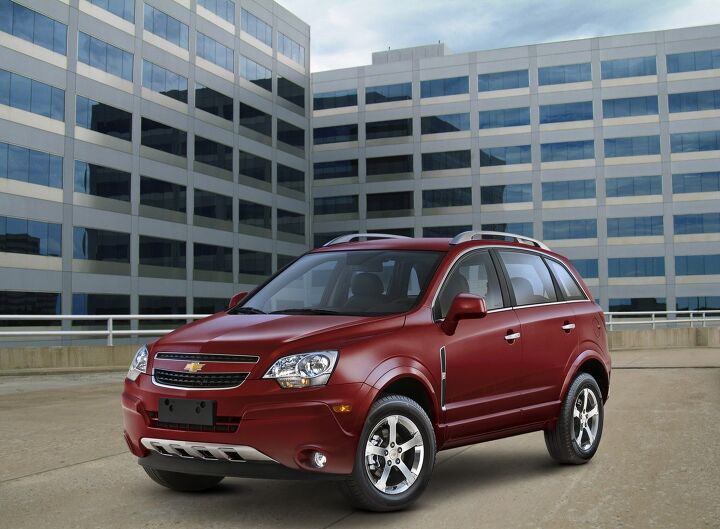#branding
Alfa-Bits: US Launch Delayed, Strategy Problems Arise
A report from Automotive News Europe [sub] says that Alfa-Romeo’s return to the US market has been delayed from late 2012 to 2013, as its parent company Fiat struggles to work out a satisfying turnaround strategy for the sporting brand. According to ANE’s sources,
In a presentation to bond holders held on March 29, [Fiat CEO Sergio] Marchionne showed a slide that said the Giulia sedan and wagon, which will replace the 159 sedan and Sportwagon, would be made in the United States starting in 2013. A year ago that slide, which was part of Fiat Group’s presentation of its five-year strategic plan, showed the Giulia models being built in Italy and debuting in North America in late 2012 as part of the brand’s return there. The Fiat spokesman now says the company still needs to decide where the make the Giulia.
Once again, Fiat finds itself torn between competing government backers. Should Fiat build the Giulia, which will be closely related to the replacement for the Chrysler 200 and Dodge Avenger, in the US (as a thank-you for receiving a bailed-out Chrysler) or in Italy (to keep jealous politicians and labor unions happy)? But it turns out that this isn’t even the extent of Alfa’s problems…
Are You Ready For: A Brand-New British MG?
MG has been building its 1995-era MGF (now MG TF) at its Longbridge, UK plant off and on since 2007, but it’s been a purely knock-down assembly affair, with kits being shipped in from Nanjing, China. But a new British-built MG is about to go into production since the brand was bought by Nanjing Auto in 2005 (Nanjing has since merged with SAIC). Called the MG6, the new compact sedan isn’t completely built at Longbridge (UK workers build and fit the engines, as well as installing the front suspension and subframe, exhaust system and electrics, but bodyshells are shipped from China), but it was designed and engineered at SAIC Motor’s European technical center in the Midlands.
Is that British enough for you?
Saab Story: No Money, No Name?
Earlier this week we learned that Saab can not pay its supplier bills until its Russian sugar daddy, Vladimir Antonov, gets Swedish government approval to buy into the company that owns it. Now, suppliers are speaking out, telling Automotive News [sub] that the brand and its owner, Spyker Cars, owes “tens of millions” of Swedish crowns (10m crowns equals about $1.6m). A representative of the Swedish suppliers association explains
There is a perception in the media that there are discussions on extended credit times and such. But it is not about that, it is about the fact that Saab must pay its bills. If they cannot sort out their financial situation, things look very bleak.
With a “desperate” hunt for investment underway, Saab’s only hope appears to be Antonov, who says he has $71.5m to invest, an amount that should cover the $4.7m+ supplier debts. Meanwhile, work at Trolhattan has been stopped for at least the rest of the week. But even if Antonov gets Swedish government approval to invest, another, equally dire problem appears to be materializing: a dispute over the use of the name “Saab.”
What's Wrong With This Picture: Imprez'd? Edition
Ask The Best And Brightest: What Ten Chevy Designs Should Define Its Future?
In celebration of Chevrolet’s approaching 100th birthday, GM’s global design boss Ed Welburn took a look back at the history of the brand’s design and picked ten models that he found to be the most significant and influential. His list has quite a few of the usual suspects (’55 Bel Air, ’63 Stingray) and a few curveballs (1989 C/K Pickup?) and, in my mind anyway, some significant omissions. Welburn’s list captures the scope of Chevy’s design history well, but I’m not convinced it’s the list that I would use to define Chevy’s design direction as it enters its second century. Hit the jump for his list, and then let us know what ten Chevy designs from the last hundred years you would look to as you guided the brand into its 21st Century future.
What's Wrong With This Picture: The L-Finesse Future Edition
According to Lexus
The LF-Gh, which stands for Lexus Future Grand Touring Hybrid, sets out to redefine the premium grand touring sedan. Through this exercise, the definition of L-Finesse, the marque’s design philosophy since 2001, has been refined and evolved to include a bolder, more distinct projection of what a luxury car could become in a modern world. The result is the LF-Gh concept, which conveys original thoughts and ideas that may migrate to future Lexus vehicles on a global scale.
From these teasers, it’s hard to tell what Lexus’s “spindle grille” actually looks like, but the brand says it “hints at the new face of Lexus vehicles.” If nothing else, Lexus seems to be diverging from its arch-conservative stylistic roots, a move that will be interesting to watch given Toyota’s history of success with a substance-over-style strategy.
Fiat To Own 30% of Chrysler "Within Weeks"
Automotive News [sub] reports that Fiat is “weeks” away from concluding an agreement in which 90 percent of its Latin American dealers will sell Chrysler vehicles, triggering a government clause that will increase Fiat’s stake in Chrysler from 25% to 30%. Known as the “Non-Nafta Distribution Event” in the Chrysler operating agreement, it calls specifically for
execution by the Company of one or more franchise agreements covering in the aggregate at least ninety percent (90%) of the total Fiat Group Automobiles S.p.A. dealers in Latin America pursuant to which such dealers will carry Company products.
And that’s it. Why does it matter that this agreement isn’t any more specific? Because Fiat has no plans to sell any Chrysler Group brands anywhere. Products, yes. Brands, no.
Buick "Ampera" In Development
Bloomberg reports:
Designers and engineers are working on a version of the plug-in hybrid Opel Ampera, which was modeled after the Volt and scheduled for sale in Europe this year, with a Buick grille and front-end styling, said the people, who didn’t want to be named because the plans are private. The Buick version would begin sales in 2013 if it gets final approval, the people said.
In theory this is a brilliant plan. Since capacity constraints are limiting production right now, GM might as well get its profit while the early adopters are still in the market. On the “not so brilliant” side of the equation is the fact that the most basic Volt already costs upward of $40,000. At that price point, how will they possibly tempt buyers up into a rebadged Opel version of the same car? On the other hand, there’s no automaker in the world that manages to associate itself so consistently with flailing brand management as does GM. Case in point, the Saturn “Flextreme” concept of 2008 pictured above. Meanwhile, this comes as no news at all to our friends in China.
Simca Returns (Pending German Patent Troll)
Renault has had quite a bit of success in recent years with its budget-brand Dacia, prompting Peugeot-Citroen to reach back into its bag of abandoned brands for a name to put behind its own low-cost car offerings. Having briefly considered the Talbot name, it seems that PSA has settled on something a little more modern and relevant to low-cost offerings: Simca. Which makes quite a bit of sense, if you think about it. Rather than naming a budget brand after the makers of hugely expensive pre-WWII luxury cars (a trick Chrysler tried once already with the Horizon), PSA can reference one of the most influential (if forgotten) small-car brands. At least, it can if it deals with that most modern of problems, the patent troll. AutoBild reports
Joachim W. “Simca” signed in September 2007 at the German Patent and Trademark Office as a trademark for the class “cars”. Then a cancellation request was made - probably by Peugeot. The French made at least one attempt to register Simca on 2 June 2008, whereupon Joachim W. submitted an application for cancellation.
It’s not clear what claim Mr Simca might have on the name, as SIMCA stands for Société Industrielle de Mécanique et Carrosserie Automobile.
Porsche 911 Turbo S Edition 918 Spyder: Adventures in Exploiting the Rich
Today, to celebrate their new 918 supercar, Porsche announced a new special edition of the venerable 911, the new Porsche 911 Turbo S Edition 918 Spyder. Boy, isn’t that a mouthful? Actually, since it’s available as a drop top, it could even be the Porsche 911 Turbo S Edition 918 Spyder Cabriolet. I admit that the nomenclature is a little confusing, now that Porsche is making a coupe with the word Spyder in its name, and putting two model numbers on one car, so just that you know what we’re talking about it’s not Porsche’s new hybrid supercar, the 918 Spyder. No, this car is indeed based on the more pedestrian (yeah, I know, it’s a car, but work with me) 911. To be sure, it’s a special 911, what with its Turbo and S suffixes, and it’s got some unique-for-a-911 carbon fiber trim and “acid-green” stitching on the leather, to effect some of the look of the 918. I just checked on TrueDelta and a regular 2011 911 Turbo S is $160,700. So how much do you think it will cost you to get behind the wheel of a 911 Turbo S Edition 918 Spyder?
How about a million dollars?
And Porsche will sell every single one that they build.
VW Counting Its Un-Hatched (Porsche-Powered) Alfas
Volkswagen’s long flirtation with Fiat’s Alfa Romeo brand has hit a few obstacles recently, as Fiat CEO Sergio Marchionne has been adamant that he won’t sell its money-losing brand to his European rival, saying
As long as I am CEO of Chrysler and Fiat, Mr [Ferdinand] Piech will never have Alfa Romeo. It’s hands-off. I told him. I will call him and I will email him. I’m not the one who bought Seat. He’s the one who bought it. I don’t know if he can [fix it], but he needs to try.
Which, as Bertel has pointed out, is a harsh burn: after all, VW may not be “winning the future” with its “Spanish Pontiac,” but at least it rescued SEAT from a struggling Fiat in the early 1980s. And now Herr Piech doesn’t want to take no for an answer, telling Autocar that it would fix Alfa up quick-smart. How? The same way VW might sex up its Audi brand: by using Porsche engines. Yes, really…
Motor Trend CPO Program Outsells Kia, Porsche
I know what you’re thinking: “What is a magazine publisher doing certifying pre-owned vehicles?” The answer: selling a lot of cars. Motor Trend’s Certified Pre-Owned (CPO) program, which certifies vehicles and dealers and offers some service features, sold more vehicles last year than Kia or Porsche’s in-house CPO programs, at 10,010 units sold. Which raises questions about both the nature of consumer demands and the efficacy of some of these OEM CPO programs. For one thing, it’s not at all clear why consumers seek out a new car magazine’s stamp of approval on a used car. After all, would you rather have your car certified by its manufacturer or by the magazine that picked the ’97 Malibu and 2002 Thunderbird as its Car Of The Year? Not that Motor Trend has anything to do with its eponymous CPO program, mind you, as that is operated by EasyCare. And that firm has some 2.6m current service contracts, a number that puts MT’s 10k units into perspective. But the real question here is how do CPO sales by brands like Porsche, Kia and Jaguar get beat by a magazine? Given that EasyCare also administers the official Volvo, Mazda, and Jaguar CPO programs, isn’t it a bit odd that the Motor Trend-branded program sells nearly as many cars (or, in the case of Jaguar, more)?
BMW Brings Sechsy Back
We’ve already seen BMW’s new smooth-and-sleek Six Series as a droptop, but is it possible that the design will gain back some of its Bangle-ian spizzarkle as a coupe? Don’t hold your breath. The new design has more old-world grace than the previous model, but as a result it looks like it’s trying a bit too hard to be a Jag or Maserati. Sure, both of those brands offer some of the most elegant touring options on the market, but isn’t BMW supposed to be just a little farther ahead of the curve than its “Olde Worlde” competition? Shouldn’t BMWs be just a little bit more architectural and a lot more coldly technical-looking? Still not sure? Hit the jump for some endless B-Roll and a gallery.
Where Did The Pontiac Fans Go… And Why?
Remember Pontiac? You know, the brand that “builds excitement.” And for all the advertising dollars GM spent over the years, trying to convince buyers that a Pontiac offered something that none of its other brands could, it turns out that quite a few former Pontiac owners have made the switch to Chevrolet and GMC. According to RL Polk
Looking at full-year 2010 data: the Pontiac brand saw 57,641 customers return to market and General Motors was able to recapture 53.3% of them. Historically through 2008, 60% of Pontiac owners have remained loyal to General Motors. In 2010, the loyalty rate fell to 47%, which represents a 13 percentage point decrease in overall General Motors loyalty. With the discontinuation of Pontiac: 33.5% defected to Chevrolet, 11.7% defected to GMC, 6.7% defected to Buick, and 1.5% defected to Cadillac.
Defections to other domestic corporations made up nearly 16% of owners. The Ford brand ranked 2nd in the conquest of Pontiac owners at 10.5%. Chrysler Corporation saw the Dodge brand ranked 9th, capturing 3.2%. Jeep and Chrysler combined were able to conquest 1.7%.
Defections to import makes were nearly 31%. Among the foreign automakers, Toyota was able to conquest 7.7% of Pontiac owners, while Honda was just behind capturing 7.5%.
Best and Brightest, I have to say this confuses me. How did over ten percent of GM’s “driving excitement” brand end up at the its truck brand (GMC)? How did over 14 percent of buyers replace the brand that brought us the GTO and G8 for the mainstream, thrill-free anonymity of Honda and Toyota? How on earth did Dodge, the remaining brand that most resembles Pontiac, only manage about 3%? You may have to let me down gently on this, B&B, but are automotive brands not as important as people make them out to be? Say it ain’t so!





















Recent Comments